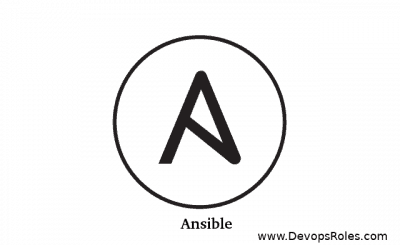Table of Contents
- 1 Introduction
- 2 What Is the dict object Has No Attribute Error in Ansible?
- 3 Common Causes of the 'dict object' Has No Attribute Error
- 4 Advanced Error Resolution Techniques
- 5 Best Practices for Avoiding the 'dict object' Has No Attribute' Error
- 6 FAQ: Common Questions About Ansible’s Dict Object Error
- 7 Conclusion
Introduction
Ansible, a powerful IT automation tool, simplifies many complex tasks. However, like all tools, it can sometimes throw frustrating errors. One such error that developers frequently encounter is:
ERROR! 'dict object' has no attribute 'xyz'The dict object has no attribute error in Ansible generally occurs when the key or attribute you are trying to access in a dictionary doesn’t exist. Whether it’s a simple typo, incorrect data structure, or missing key, this issue can halt your automation processes.
In this blog post, we’ll walk you through the common causes of this error and provide step-by-step solutions ranging from basic to advanced troubleshooting. With clear examples and best practices, you’ll learn how to resolve this error quickly and efficiently.
What Is the dict object Has No Attribute Error in Ansible?
The 'dict object' has no attribute error typically occurs when a playbook tries to access a key or attribute in a dictionary, but that key doesn’t exist or is incorrectly referenced.
Example Error Message:
ERROR! 'dict object' has no attribute 'email'This error signifies that Ansible is attempting to access a key, such as 'email', in a dictionary, but the key isn’t present, leading to the failure of the playbook execution.
Why Does This Happen?
- Misspelled keys: A common cause is referencing a key incorrectly.
- Missing attributes: The desired key doesn’t exist in the dictionary.
- Incorrect dictionary structure: Mismanagement of nested dictionaries.
- Dynamic data issues: Inconsistent or unexpected data structure from external sources (e.g., APIs).
Understanding why this error occurs is critical to resolving it, so let’s explore some typical cases and how to fix them.
Common Causes of the 'dict object' Has No Attribute Error
1. Misspelled Keys or Attributes
Typos are a frequent cause of this error. Even a minor difference in spelling between the actual dictionary key and how it’s referenced in the playbook can lead to an error.
Example:
- name: Print the user email
debug:
msg: "{{ user_info.email }}"
vars:
user_info:
email_address: john@example.comHere, the dictionary user_info contains email_address, but the playbook is trying to access email, which doesn’t exist. Ansible throws the 'dict object' has no attribute 'email' error.
Solution:
Always verify that your dictionary keys match. Correcting the key reference resolves the issue.
- name: Print the user email
debug:
msg: "{{ user_info.email_address }}"2. Non-existent Key in the Dictionary
Sometimes, the error occurs because you’re trying to access a key that simply doesn’t exist in the dictionary.
Example:
- name: Show user’s email
debug:
msg: "{{ user_data.email }}"
vars:
user_data:
name: Alice
age: 25Since the user_data dictionary doesn’t have an email key, the playbook fails.
Solution:
The best practice in this situation is to use Ansible’s default filter, which provides a fallback value if the key is not found.
- name: Show user’s email
debug:
msg: "{{ user_data.email | default('Email not available') }}"This ensures that if the key is missing, the playbook doesn’t fail, and a default message is displayed instead.
3. Incorrect Access to Nested Dictionaries
Accessing nested dictionaries incorrectly is another common cause of this error, especially in complex playbooks with deeply structured data.
Example:
- name: Display the city
debug:
msg: "{{ user.location.city }}"
vars:
user:
name: Bob
location:
state: TexasThe playbook attempts to access user.location.city, but the dictionary only contains state. This results in the 'dict object' has no attribute' error.
Solution:
To avoid such issues, use the default filter or verify the existence of nested keys.
- name: Display the city
debug:
msg: "{{ user.location.city | default('City not specified') }}"This way, if city doesn’t exist, a default message will be displayed.
4. Data from Dynamic Sources (e.g., APIs)
When working with dynamic data from APIs, the response structure might not always match your expectations. If a key is missing in the returned JSON object, Ansible will throw the 'dict object' has no attribute' error.
Example:
- name: Fetch user info from API
uri:
url: http://example.com/api/user
return_content: yes
register: api_response
- name: Display email
debug:
msg: "{{ api_response.json.email }}"If the API response doesn’t contain the email key, this results in an error.
Solution:
First, inspect the response using the debug module to understand the data structure. Then, use the default filter to handle missing keys.
- name: Debug API response
debug:
var: api_response
- name: Display email
debug:
msg: "{{ api_response.json.email | default('Email not found') }}"Advanced Error Resolution Techniques
5. Using the when Statement for Conditional Execution
You can use Ansible’s when statement to conditionally run tasks if a key exists in the dictionary.
Example:
- name: Print email only if it exists
debug:
msg: "{{ user_data.email }}"
when: user_data.email is definedThis way, the task only runs if the email key exists in the user_data dictionary.
6. Handling Lists of Dictionaries
When dealing with lists of dictionaries, accessing missing keys in an iteration can cause this error. The best approach is to handle missing keys with the default filter.
Example:
- name: Print user emails
debug:
msg: "{{ item.email | default('Email not available') }}"
loop: "{{ users }}"
vars:
users:
- name: Alice
email: alice@example.com
- name: BobFor Bob, who doesn’t have an email specified, the default message will be printed.
7. Combining Conditional Logic and Default Filters
For complex data structures, it’s often necessary to combine conditional logic with the default filter to handle all edge cases.
Example:
- name: Print user city if the location exists
debug:
msg: "{{ user.location.city | default('No city available') }}"
when: user.location is definedThis ensures that the task only executes if the location key is defined and provides a default message if city is not available.
8. Debugging Variables
Ansible’s debug module is a powerful tool for inspecting variables during playbook execution. Use it to output the structure of dictionaries and identify missing keys or values.
Example:
- name: Inspect user data
debug:
var: user_dataThis will output the entire user_data dictionary, making it easier to spot errors in the structure or identify missing keys.
Best Practices for Avoiding the 'dict object' Has No Attribute' Error
- Double-Check Key Names: Verify that key names are correctly spelled and match the dictionary.
- Use
defaultFilters: When unsure whether a key exists, always use thedefaultfilter to provide a fallback value. - Validate Dynamic Data: Inspect data from APIs and other external sources using the
debugmodule before accessing specific keys. - Apply Conditional Logic: Use the
whenstatement to ensure tasks only run when necessary keys are defined. - Leverage the
debugModule: Regularly inspect variable structures with thedebugmodule to troubleshoot missing or incorrectly referenced keys.
FAQ: Common Questions About Ansible’s Dict Object Error
Q1: Why does the 'dict object' has no attribute error occur in Ansible?
This error happens when Ansible tries to access a key in a dictionary that doesn’t exist. It’s often due to typos, missing keys, or incorrect dictionary structure.
Q2: How can I prevent this error from occurring?
To avoid this error, always validate that the keys exist before accessing them. Use Ansible’s default filter to provide fallback values or check key existence with conditional logic (when statements).
Q3: Can I resolve this error in lists of dictionaries?
Yes, you can iterate over lists of dictionaries using loops and handle missing keys with the default filter or conditional checks.
Q4: How do I debug a dictionary object in Ansible?
Use the debug module to print and inspect the contents of a dictionary. This helps in identifying missing keys or unexpected structures.
Conclusion
The 'dict object' has no attribute' error in Ansible can be daunting, but it’s often straightforward to resolve. By following best practices like checking key names, using fallback
values with the default filter, and debugging variable structures, you can effectively troubleshoot and resolve this issue.
Whether you’re a beginner or an advanced Ansible user, these techniques will help ensure smoother playbook execution and fewer errors. Understanding how dictionaries work in Ansible and how to handle missing keys will give you confidence in automating more complex tasks. Thank you for reading the DevopsRoles page!

